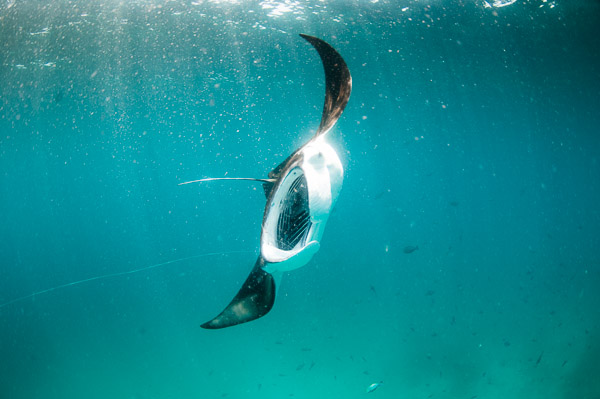MantaWatch publishes manta interaction guidelines

MantaWatch has published a series of guidelines for responsible interactions with manta rays. The organization aims to use people’s images of the markings on mantas to identify specific individual animals and hence to record sightings of them over time. This information will be databased and used to extend knowledge of manta migration and habitat preferences.
7 steps for responsible manta encounters.
A manta encounter is a magical experience. These 7 simple steps can help you to enjoy a longer and more spectacular encounter, while minimizing your environmental impacts.
Manta Ray Code of Conduct:
BRIEFING – Your guide will provide a manta ray briefing. Follow their advice to maximize your manta experience.
OBSERVE ONLY – Do not approach closer than 3 meters, and allow the manta to approach of its own free will. Refrain from touching or riding mantas, which can rub off protective mucous coatings and cause injury.
BEHAVIOR – Avoid restricting the manta’s normal movement or behavior. Approach the manta slowly, and do not chase. Longer and closer encounters normally result from waiting patiently and allowing the mantas to approach.
POSITION – Divers should stay on or near to the rubble, sand or boulder bottom. An open water column is necessary for mantas to maneuver, and they are more likely to approach closer. Form a semi-circle with your group, allowing the manta a clear escape path.
BUBBLES – Be aware that exhaled bubbles can startle mantas swimming overhead.
IMPACTS – Be aware of buoyancy, avoid accidentally knocking or kicking the reef, and do not touch the reef unnecessarily. Do not take anything from the underwater environment.
PHOTOGRAPHERS – If taking photos or videos, do not overlook these rules or other divers in order to get a good picture. Avoid excessive flash photography, and let the mantas come to you.
For more information, please see the MantaWatch website.